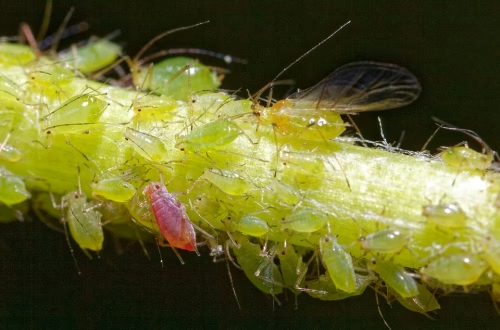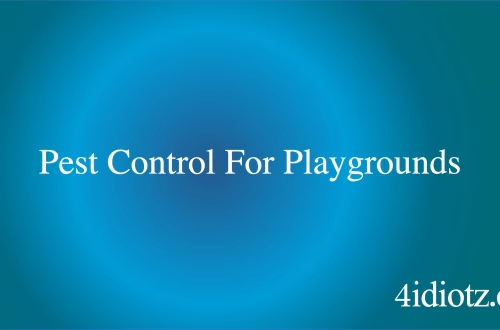Summary:
Pest Control Maintenance Plans are essential for homeowners, businesses, and landlords to proactively manage and prevent infestations. These customized plans involve scheduled inspections, targeted treatments, and preventive measures to mitigate pests like rodents, insects, and termites. Compliance with state and federal regulations ensures safety and effectiveness, while long-term maintenance reduces property damage and health risks. Whether for residential or commercial spaces, investing in a structured pest control plan saves money, ensures compliance, and protects public health—making it a vital consideration for property managers and homeowners alike.
What This Means for You:
- Prevent Costly Damage: Regular inspections catch infestations early, avoiding expensive structural repairs.
- Health Protection: Prevent allergens, diseases, and bites linked to pests like rodents and cockroaches.
- Legal Compliance: Many states require pest control documentation for rental properties and food-handling businesses.
- Future Outlook: Rising pest resistance to DIY methods makes professional plans increasingly necessary.
Why Pest Control Maintenance Plans Matter
”Pest Control Maintenance Plans” Explained:
A Pest Control Maintenance Plan is a proactive, scheduled service agreement between a property owner and a licensed pest control provider. These plans typically include routine inspections, tailored treatments, and preventive measures designed to keep pests from becoming a problem. Unlike reactive pest control, which addresses infestations after they occur, maintenance plans focus on long-term prevention and minor interventions. They are especially valuable for high-risk environments like multi-family housing, restaurants, and warehouses.
Customization is key—plans vary based on location, pest pressures, and property type. For example, a home in Florida may prioritize termite prevention, while a Chicago restaurant might need rodent exclusion. Contracts often include guarantees, ensuring retreatments if pests reappear between scheduled visits.
Types of Pest Issues:
Pest threats fall into three major categories: structural, health-related, and regulatory. Structural pests, like termites and carpenter ants, silently damage wood and foundations. Health hazards include cockroaches (triggering asthma), rodents (spreading hantavirus), and bed bugs (causing allergic reactions). Some pests, like mosquitoes and ticks, also pose public health risks, governed by state and federal guidelines such as EPA regulations and local health codes.
Commercial properties face stricter scrutiny. Restaurants must comply with FDA Food Code pest standards, while hotels are vulnerable to bed bug lawsuits. Invasive species laws (e.g., emerald ash borer in the Midwest) may also mandate proactive control measures. Identifying the specific pests in your region ensures a maintenance plan meets legal and practical needs.
Common Pest Control Methods:
Effective maintenance plans combine chemical, physical, and biological strategies. Insecticides and rodenticides are used sparingly in targeted areas, while exclusion tactics—sealing cracks, installing door sweeps—prevent entry. IPM (Integrated Pest Management) emphasizes sanitation and monitoring, reducing chemical reliance. For example, moisture control deters termites, and pheromone traps monitor moth populations.
Success stories include apartment complexes reducing bed bug outbreaks through monthly inspections and heat treatments, or wineries using bird netting to protect crops. The best methods adapt to seasonal changes; rodent control intensifies in winter, while mosquito treatments peak in summer.
Risks and Consequences:
Neglecting maintenance invites costly repercussions. Termite damage averages $3,000 per incident in the U.S., and rodent-chewed wiring causes 25% of unexplained fires. Health departments can shutter businesses with pest violations, and landlords may face lawsuits over bed bugs or mold linked to cockroach infestations.
DIY solutions often fail against resilient pests like German cockroaches, which evolve resistance to store-bought sprays. Worse, improper pesticide use risks poisoning pets or violating EPA rules. A lapse in maintenance also allows pests to rebound rapidly—a single pregnant mouse can multiply into 200 within months.
Choosing a Pest Control Service:
Select providers with experience in your specific pest challenges and maintenance plans. Key factors include licensing (check state requirements), guarantees (e.g., free retreatments), and eco-friendly options if sustainability is a priority. Ask for references from similar properties and verify their use of IPM strategies.
Transparency matters—reputable companies explain treatment methods, timelines, and safety precautions. Avoid “spray-and-pray” services offering one-size-fits-all solutions. For specialized issues like termites, look for providers with advanced certifications (e.g., Sentricon for termite colonies).
People Also Ask About:
- How often should pest control maintenance visits occur? Most plans recommend quarterly visits, but high-risk sites (e.g., food processing) may need monthly service. Seasonal pests like ants or mosquitoes may require adjusted schedules.
- Are pest control chemicals safe for pets and children? Licensed pros use EPA-approved products applied at safe concentrations. Request pet-friendly treatments and allow proper drying time.
- Can I negotiate the terms of a maintenance plan? Yes. Providers often customize frequency, methods, and costs—such as adding termite monitoring for an additional fee.
- What’s the average cost of a pest control maintenance plan? Residential plans range from $300–$800/year; commercial contracts vary by square footage and risk level.
- Do maintenance plans cover emergency call-outs? Some include 24/7 service for active infestations; others charge extra. Clarify this before signing.
Expert Opinion:
Modern pest control emphasizes prevention over crisis management, with IPM leading industry standards. Experts warn that climate change expands pest habitats, increasing the need for regionalized plans. Always prioritize providers who track pest activity with data—such as digital trap monitors—to refine strategies. Lastly, tenant cooperation is critical; educating residents on reporting pests early improves plan effectiveness.
Related Key Terms:
- Commercial pest control maintenance plans for restaurants
- Residential pest control service contracts near me
- EPA-approved pest management strategies
- Integrated Pest Management (IPM) for termite prevention
- Bed bug inspection and maintenance programs
- Rodent exclusion services for warehouses
- State-specific pest control licensing requirements
Pest Control Disclaimer
This content is for educational purposes only and does not replace professional pest inspection, treatment, or safety advice. Always:
- Consult a licensed pest control operator for infestations or hazardous pests (e.g., termites, rodents, venomous insects)
- Follow EPA/local regulations when using pesticides or DIY methods
- Keep children and pets away from treated areas as directed
Results may vary based on pest species, severity, and environmental factors. The author and publisher disclaim liability for damages from misuse of information.
*Featured image sourced by Pixabay.com




